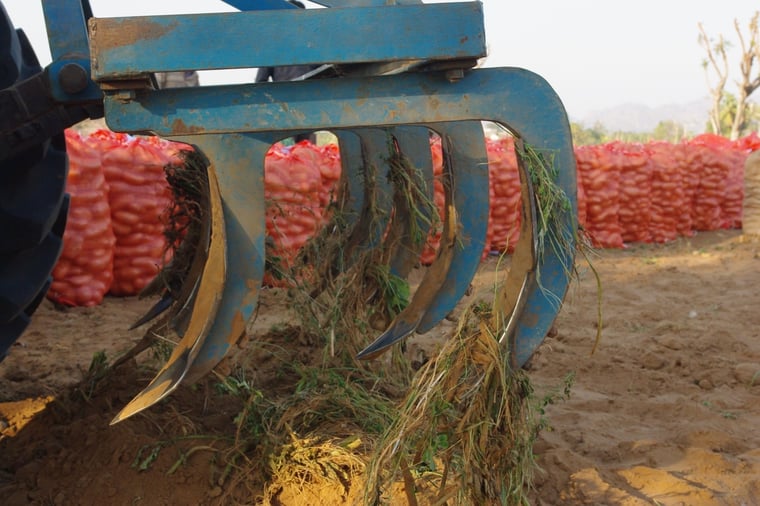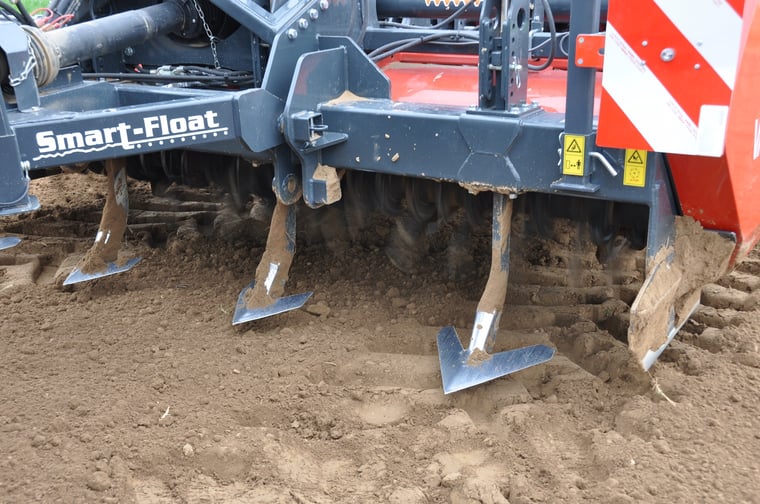
There are several tillage methods in mechanized production systems. Ploughing is the most common method, especially with a moldboard plough that overturns the soil. It first makes a rough seed bed, thereby burying leftovers of the previous crop and weeds. It also involves incorporation of manure or compost in the soil. A plough is comprised of a knife or disc coulter, a chisel, a main-share and a moldboard. They are single-sided or reversible and make one or more furrows.
Other types of ploughs are the chisel plough for deep tillage that disrupts the plough pan which is a compacted layer just below the ploughed top soil. They reach a depth of some 30 cm and their shanks are about 60 cm apart. Chisel ploughing in potato production is done on light soils with moderate quantities of plant leftovers and weeds at the surface. This method of soil tillage is advantageous where there is a risk of soil erosion as the subsoil is less exposed to wind than with moldboard ploughing.
Disc plough
Ploughing with a disc plough also upturns the soil to a lesser degree. They are used in light soils susceptible to erosion. Disruption of a deeper pan, between 30 and 60 cm that hampers root growth, capillary rise and drainage of water is carried out with a subsoiler. Crumbling the soil after ploughing is done using a tine or disc harrow or a roller on light soils. On somewhat heavier soils a cultivator that is similar to chisel plough but operates more superficially and has smaller teeth is applied followed by a harrow or a Cambridge roller or other rollers. On heavy clay soils a power take-off rotary cultivator (rotavator) that breaks up any clods is used.

Potato with its underground storage organ is especially sensitive to waterlogging. A sub-soiler disrupts any pan and facilitates drainage of excess water from rainfall and irrigation. Also roots can penetrate deeper to tap water and nutrients
Want to keep reading about the potato crop and pre-planting operations?
Our Potato handbook is a global potato university in 1 book!
Buy your copy today and get a one-year free subscription to PotatoWorld magazine.

